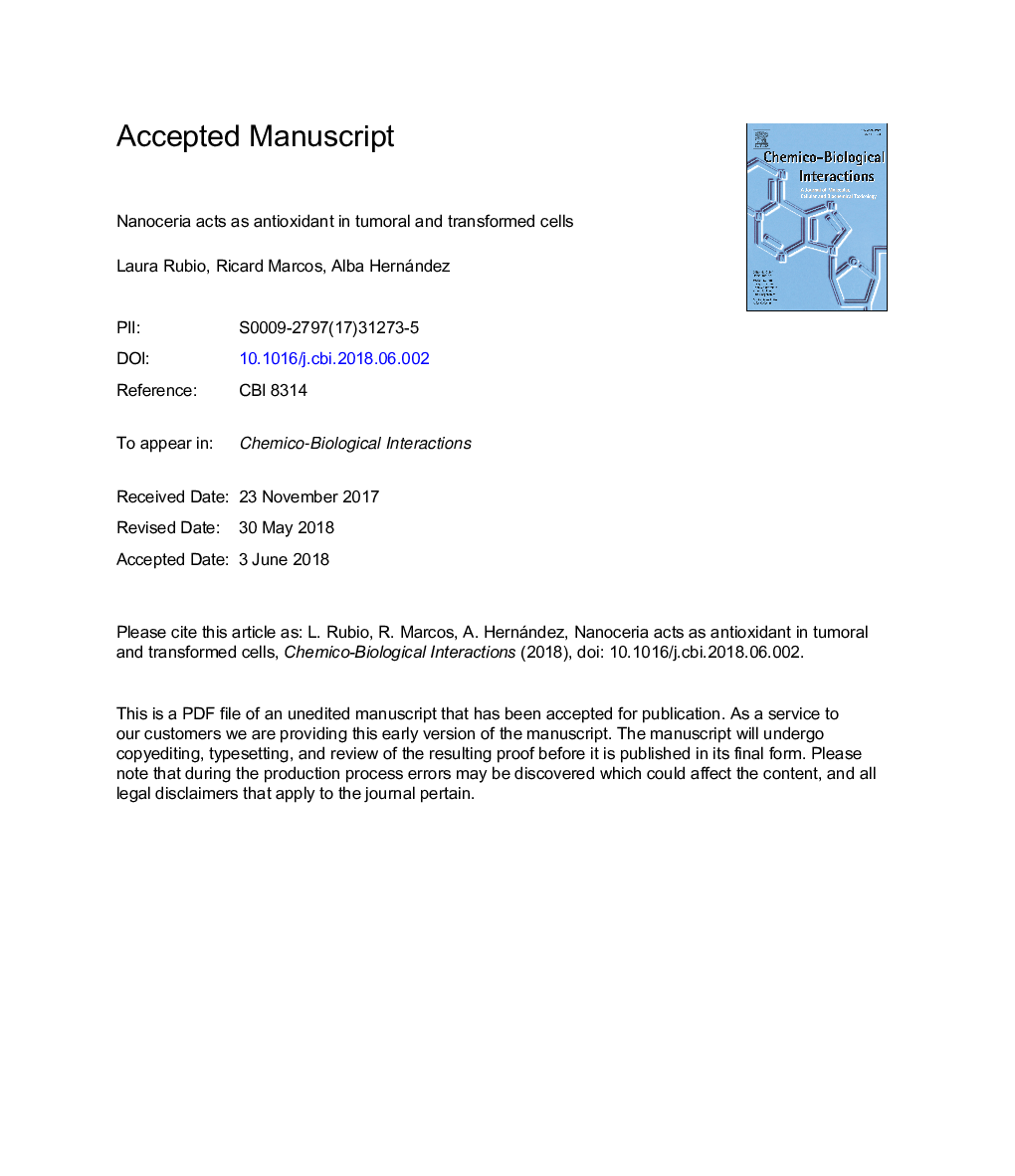| Article ID | Journal | Published Year | Pages | File Type |
|---|---|---|---|---|
| 8544576 | Chemico-Biological Interactions | 2018 | 37 Pages |
Abstract
Antioxidant/prooxidant properties of cerium oxide nanoparticles (nanoceria) have been reported. It has been proposed that this protective/adverse role would depend of the cell status. In tumoral cells, nanoceria would act as prooxidant, while in normal cells it would act as antioxidant. In this context our work aims to study the nanoceria antioxidant/prooxidant capacity in different tumoral cell lines, studying how cell origin (non-tumoral vs tumoral), or extracellular environment could affect its protective/adverse effect. We have determined the ability of nanoceria to reduce the levels of reactive-oxygen-species (ROS) generated by the antitumoral agent cisplatin in five human tumoral cells. Results indicate that combined treatment reduces the levels of induced ROS in practically all cases. Prooxidant effects were never observed. The growth of A549â¯cell line in a forced acidic environment showed that the antioxidant properties of nanoceria were not influenced. A normal mouse embryonic fibroblast cell line (MEF) and its arsenic-transformed isogenic counterpart (AsT-MEF) were also evaluated. As in the other cases, nanoceria elicited an antioxidant effect in both MEF and AsT-MEF. In addition, nanoceria pretreatment also reduced the levels of apoptosis and cell death induced by cisplatin. From our results, we can conclude that the tumoral state of the cells is not a general argument to explain a potential non-protective role of nanoceria.
Related Topics
Life Sciences
Environmental Science
Health, Toxicology and Mutagenesis
Authors
Laura Rubio, Ricard Marcos, Alba Hernández,
